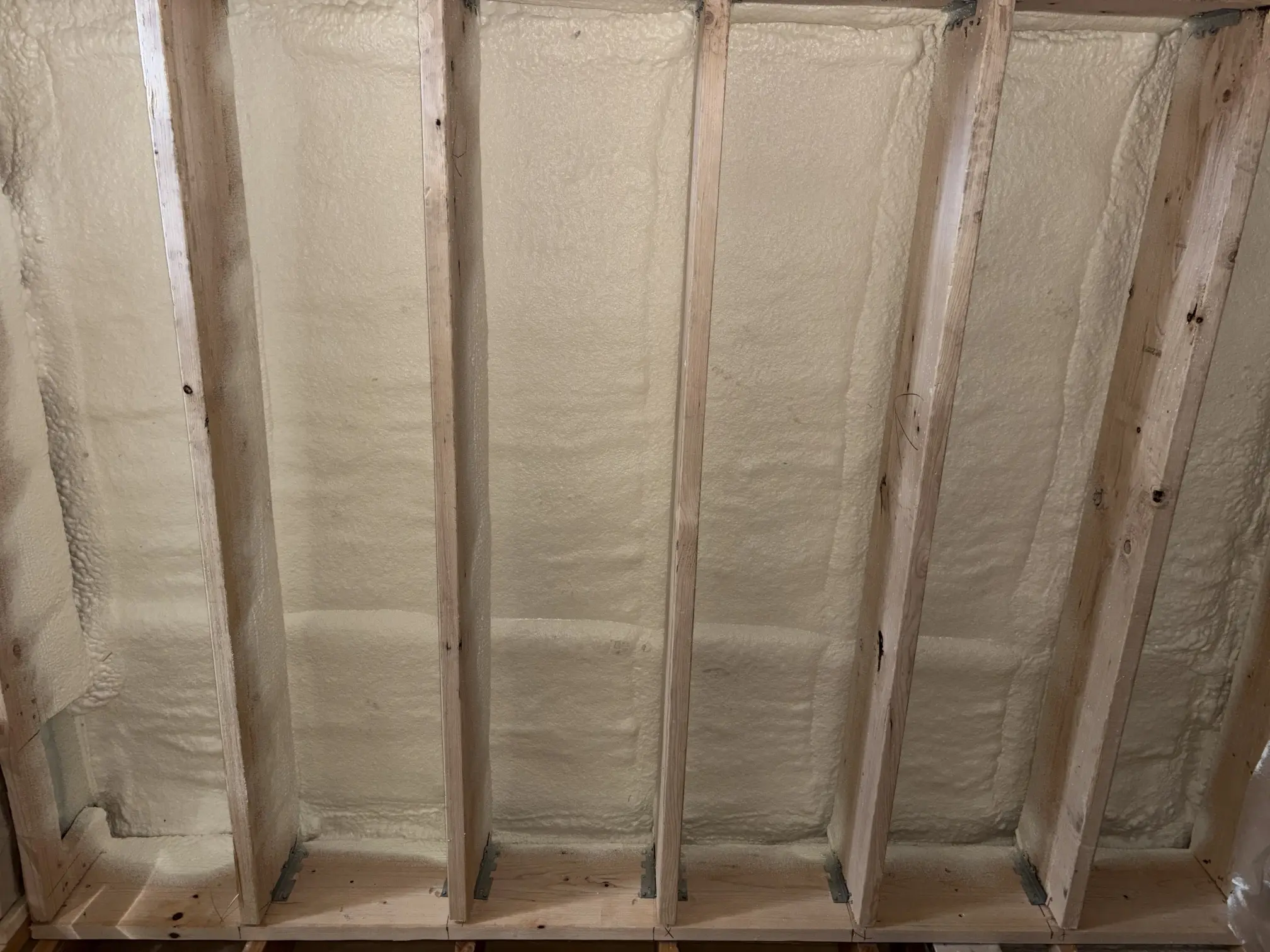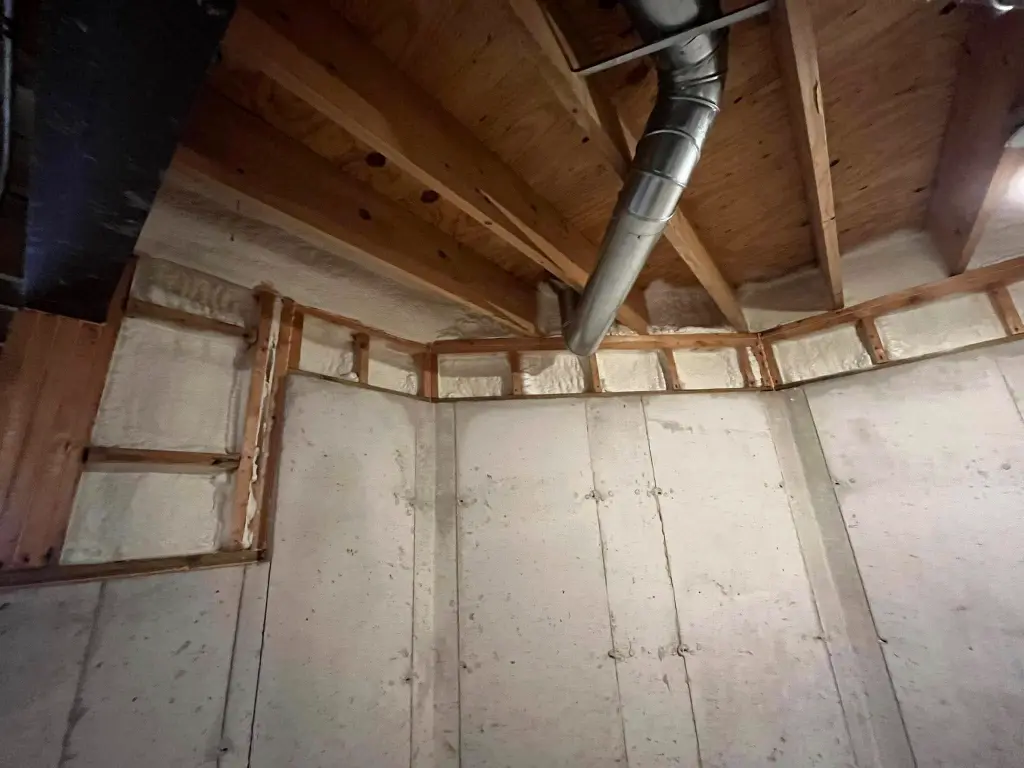
Spray foam insulation reduces humidity inside homes by sealing air leaks, controlling moisture infiltration, and stabilizing indoor temperature levels. In Mount Greenwood, where summer humidity often exceeds 75%, spray foam forms an airtight barrier that minimizes warm, moist air entering through attics, basements, and wall cavities. Closed-cell spray foam, in particular, has low vapor permeability, acting as both insulation and moisture control in a single application.
This guide explains how spray foam insulation addresses common humidity challenges in Mount Greenwood homes. It draws from real-world installation experience and verified building science principles to help homeowners understand when, where, and how spray foam makes the most impact.
South Chicago Insulation has applied spray foam systems in older wood-frame homes, newly built structures, and retrofits across the South Side. The observations shared here are based on these varied field conditions.
Homes in Mount Greenwood are subject to humid summers and cold winters. Excess moisture in summer often leads to condensation, musty odors, mold growth, and degraded insulation performance.
| Condition | Consequences in Homes |
|---|---|
| High indoor relative humidity | Increases risk of mold/mildew in walls and attics |
| Air leakage from outside | Pulls in humid air, raising energy costs |
| Condensation on cold surfaces | Promotes decay in framing, drywall, and insulation |
| Inadequate vapor barrier | Allows moisture diffusion into insulated spaces |
| Poor attic or crawlspace sealing | Amplifies humidity levels throughout the building |
Bonus Tip: During attic upgrades, moisture sensors placed inside old batt insulation often show RH spikes over 80% on humid days. Closed-cell spray foam resolves this by blocking air and moisture together.
Spray foam stops uncontrolled air exchange, which is the primary cause of humidity issues. It does this by forming a continuous insulation and air barrier across surfaces like wall sheathing, rim joists, attic decks, and rooflines.
| Property | Closed-Cell Spray Foam | Open-Cell Spray Foam | Fiberglass Batts | Cellulose Blown-In |
|---|---|---|---|---|
| Vapor permeability (perm) | <1 (low) | >10 (high) | High | Moderate |
| Air sealing effectiveness | High | Moderate | Low | Moderate |
| R-value per inch (avg) | 6.5 | 3.6 | 3.0-3.2 | 3.2-3.5 |
| Water absorption | Minimal | Moderate | High | High |
| Mold resistance | High | Moderate | Low | Low |
Closed-cell spray foam outperforms other options in resisting moisture ingress and condensation risk. Open-cell may be suitable in some wall assemblies with proper vapor retarders but is less suited for high-humidity areas like attics and crawlspaces in Mount Greenwood.

Mount Greenwood sits within Chicago’s humid continental climate zone (Zone 5A), where insulation must manage both winter cold and summer humidity. Homes with unconditioned attics or vented crawlspaces are especially vulnerable to seasonal moisture swings.
Key insights from recent installations:
Bonus Tip: In vented attics, convert to an unvented assembly using closed-cell spray foam directly under roof sheathing. This stabilizes attic temperature and humidity year-round.
| Specification | Closed-Cell Spray Foam |
|---|---|
| Perm Rating | <1 perm (Class II vapor retarder) |
| R-Value (2 inches) | R-13 |
| Air Leakage Reduction (post-install) | Up to 90% (verified via blower door) |
| Water Absorption (ASTM C272) | <0.3% |
| Dimensional Stability (ASTM D2126) | Excellent under humidity fluctuations |
| Mold Growth Index (ASTM D3273) | 0 (no mold growth) |
Source: International Association of Certified Home Inspectors, 2023; Building Science Corporation field data, 2024
No. Closed-cell foam limits vapor diffusion but does not trap existing moisture. Proper installation ensures dry surfaces before application.
No. Mold must be remediated before applying foam. Spray foam prevents future moisture but does not remove current damage.
Yes. Closed-cell spray foam is highly effective in both hot-humid and cold-humid regions when properly installed.
Not recommended unless paired with a vapor retarder membrane and designed by a building professional.
For insulation that controls humidity and improves indoor comfort, contact South Chicago Insulation.
Phone: (779) 803-8025
Email: [email protected]
It lasts 20–30 years or more with no degradation in moisture resistance.
Yes. By controlling moisture and sealing leaks, it reduces both sensible and latent loads.
Yes, in most cases. Old fiberglass or moldy cellulose must be removed to ensure adhesion.
Yes. Strategic areas like attics, rim joists, and crawlspaces offer the highest gains.
Often yes. Reduced infiltration leads to lower indoor humidity, especially in peak summer.